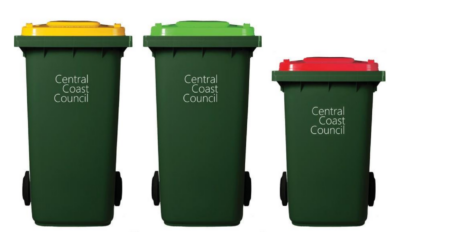Councillors are looking at ways of making the most of the State Government’s legislation that means all Food Organics and Garden Organics (FOGO) picked up by councils must be recycled by 2030.
The Council’s Economic Development Committee wants council to develop a comprehensive briefing paper on Buttonderry Waste Facility with a view to seeking expressions of interest for the future development, operation and income generation of the site.
The committee met on April 1 and noted:
1. The shortage of landfill sites in Greater Sydney;
2. The state government legislation for transition to Food Organics and Garden Organics (FOGO) by 2030;
3. New and emerging technology to process waste;
4. Over $30m paid annually by council to the state government for garbage tax;
5. The strategic significance and value of Buttonderry waste facility at Jilliby with an estimated value exceeding $2b.
Cr John Mouland said the primary reasons he moved the recommendation included:
# maximising a High-Value Asset by exploring development opportunities to maximize its value for ratepayers and reducing financial pressure on Council.
“Council currently pays over $30 million annually in garbage tax to the state government. By identifying new waste management solutions, we can potentially reduce this burden and reinvest those funds into core local services and infrastructure,” he said.
“With Sydney facing landfill shortages and the state government’s mandated transition to FOGO by 2030, we have the opportunity to position Buttonderry as a mega-region leader in waste processing,” Mouland said.
# Emerging waste technologies offer opportunities for more efficient waste processing, resource recovery, including energy generation.
“Council already has a methane-to-energy facility on-site at Buttonderry, demonstrating our ability to harness waste as a resource,” Cr Mouland said.
“Further exploration of innovative technologies could expand these capabilities, creating new revenue streams for the council while reducing environmental impact.”
# He said a strategic approach to Buttonderry’s future could attract private sector investment, create local jobs, and drive economic growth.
“This aligns with our committee’s core objective of fostering economic development in our region,” he said.
“By developing a comprehensive briefing paper and seeking expressions of interest, Council will be in the position to ensure the responsible management of a critical asset while exploring ways to enhance long term financial sustainability, environmental leadership, and economic growth for our region.”
The recommendation will go to the April meeting of Council for adoption.

The Council while under administration adopted a recommendation in 2023 to conduct a FOGO feasibility study.
Then in May 2024, the administrator Rik Hart accepted the report and asked council to take the next step; to conduct a business study.
Mr Hart said at the time that it was a slow process and also that it could involve public private partnerships.
Council’s Resource Management Strategy 2020-2030 states there is potential to recover more than 61,000 tonnes of additional resources from the Coast’s general waste stream by improving capture rates and expanding waste services.
“Across all household collections on the Central Coast, residents generated 168,243 tonnes of waste in 2018-19, of which 59% (98,511 tonnes) was sent to landfill and 41% (69,732 tonnes) was recovered,” the report states.
“Another 106,763 tonnes of drop-off material was received at our three waste facilities.”
(Back when the report was written, Kincumber tip was still operating.)
“A significant 22% of material in our red lid general waste bins (by weight) was recyclable items that should be captured in yellow lid recycling bins or other existing recycling services,” the report stated.
“In terms of the yellow lid recycling bin, 8.5% of its content is contamination, including soiled paper, non-recyclable glass (mixed glass and glass fines), non-recyclable plastic, plastic film and containerised food.
“While marginally better than the NSW average, contamination with non-recyclable items can lead to rejection of valuable recyclables by the recycler, increasing community costs and reducing our recovery rate.
“Further education and community support is required to support Council in minimising contamination, the 2020 report stated.



Leave a Reply